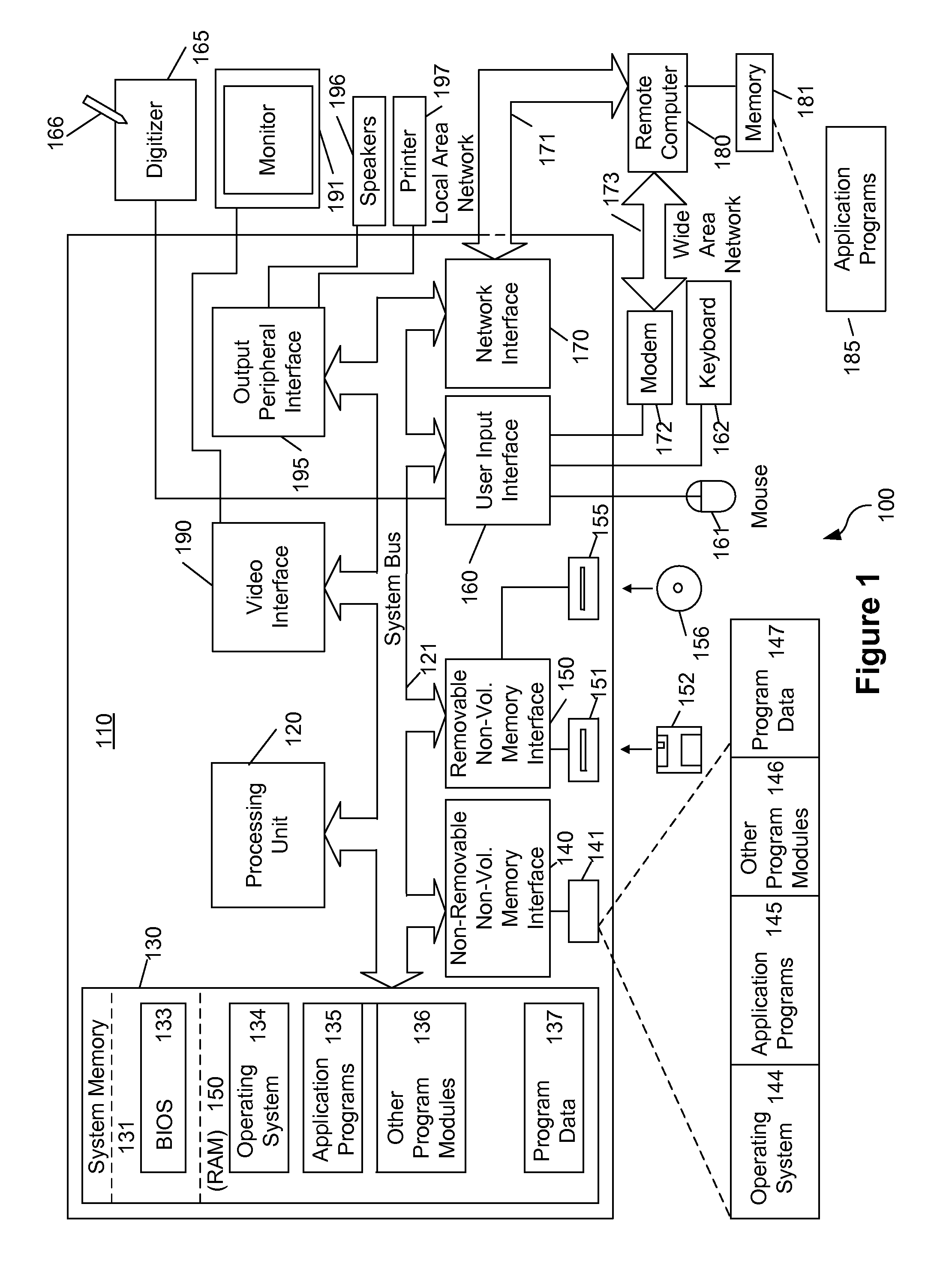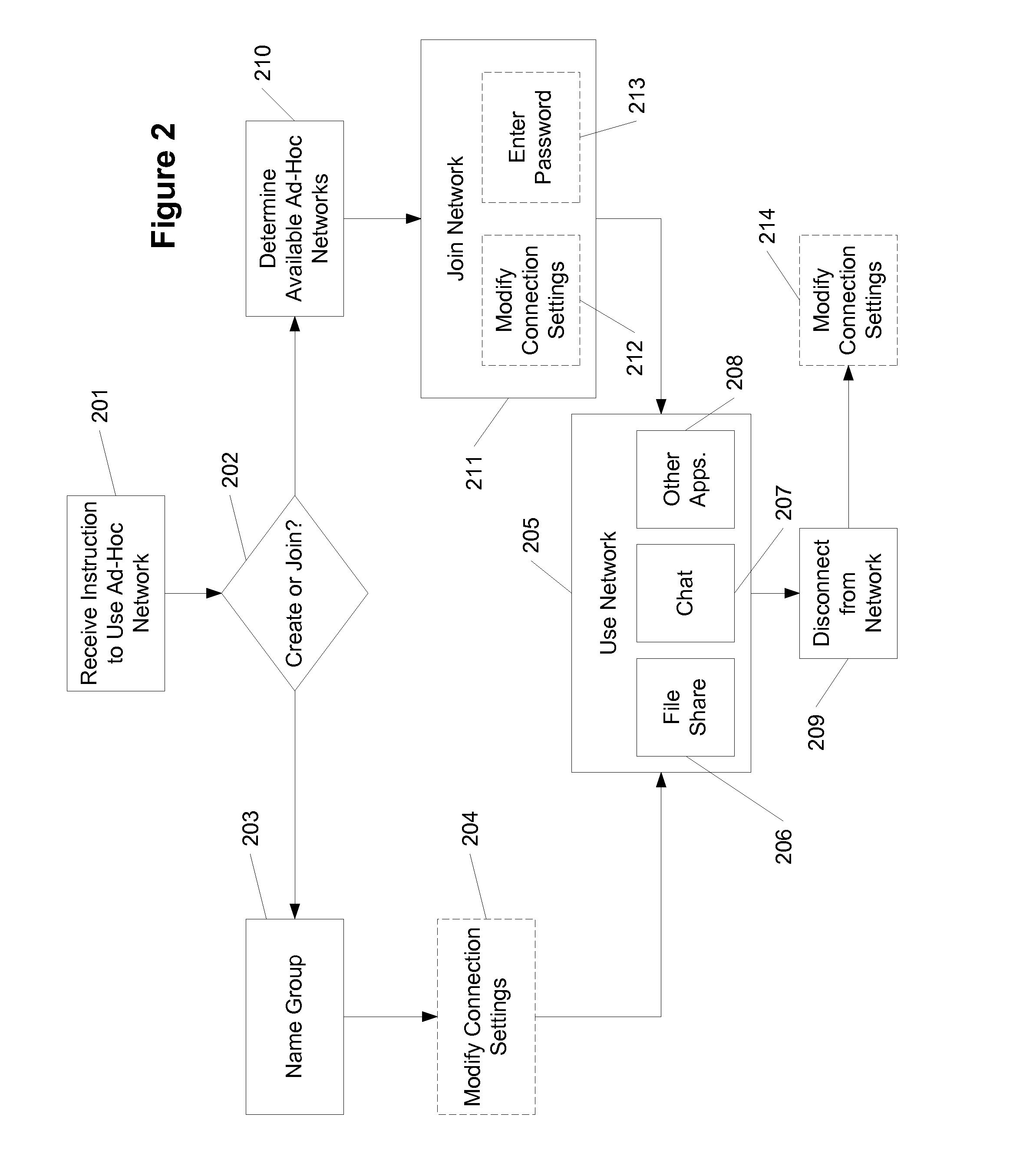User experience for collaborative ad-hoc networks
a collaborative ad-hoc network and user experience technology, applied in the field of computing systems, can solve the problems of low acceptance of applications that permit such networking, difficult to create wireless networks, and difficult to use for common users, so as to improve the creation and use system of ad-hoc networks
- Summary
- Abstract
- Description
- Claims
- Application Information
AI Technical Summary
Benefits of technology
Problems solved by technology
Method used
Image
Examples
Embodiment Construction
[0022]Aspects of the present invention relate to a user experience for the creation and use of collaborative ad-hoc networks.
[0023]This document is divided into sections to assist the reader. These sections include: overview, general-purpose computing environment, ad-hoc network create / join, and alternative user interfaces for creating an ad-hoc network.
[0024]It is noted that various connections are set forth between elements in the following description. It is noted that these connections in general and, unless specified otherwise, may be direct or indirect and that this specification is not intended to be limiting in this respect.
A. Overview
[0025]Aspects of the present invention relate to providing an easy process for a user to create an ad-hoc network. The users may want to create the ad-hoc network for the purpose of exchanging information with others without the burden of connecting to a hotspot or in the absence of any network resource.
[0026]Conventional approaches to establis...
PUM
 Login to View More
Login to View More Abstract
Description
Claims
Application Information
 Login to View More
Login to View More - R&D
- Intellectual Property
- Life Sciences
- Materials
- Tech Scout
- Unparalleled Data Quality
- Higher Quality Content
- 60% Fewer Hallucinations
Browse by: Latest US Patents, China's latest patents, Technical Efficacy Thesaurus, Application Domain, Technology Topic, Popular Technical Reports.
© 2025 PatSnap. All rights reserved.Legal|Privacy policy|Modern Slavery Act Transparency Statement|Sitemap|About US| Contact US: help@patsnap.com



